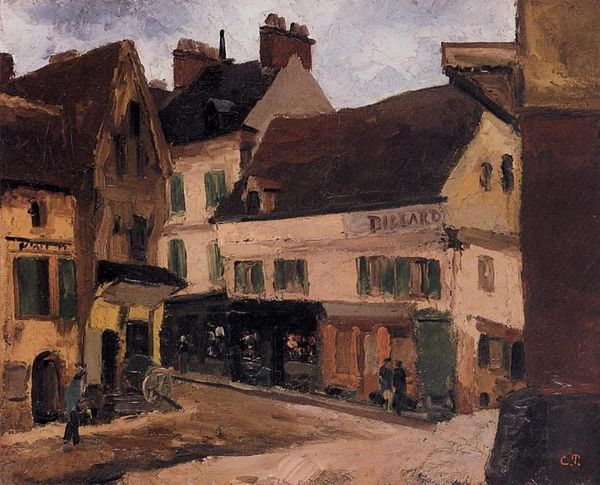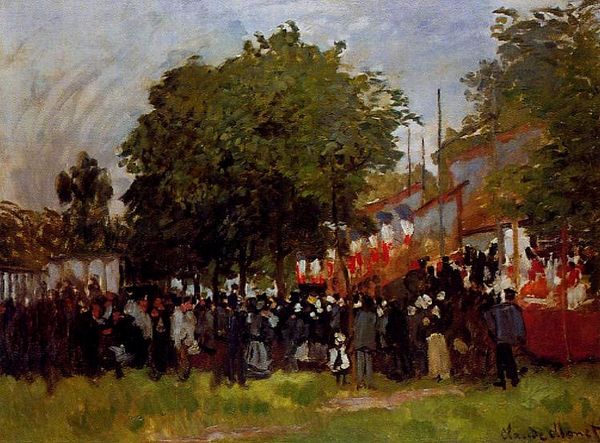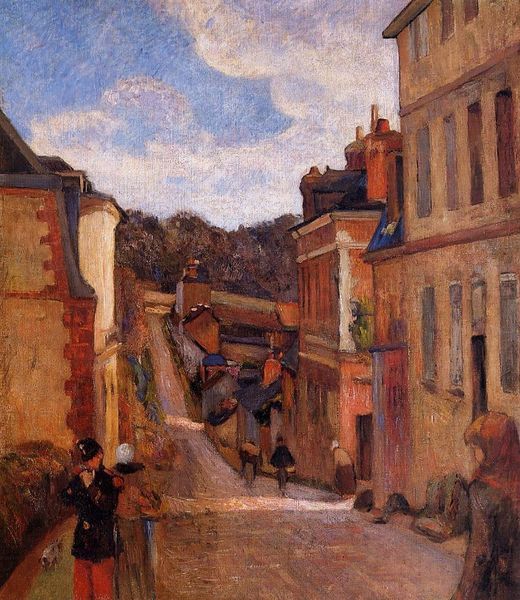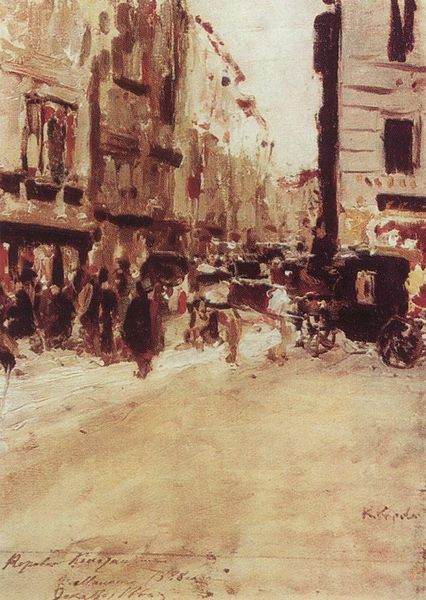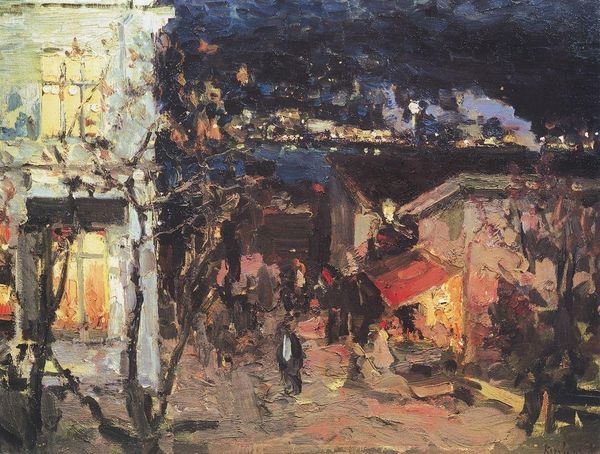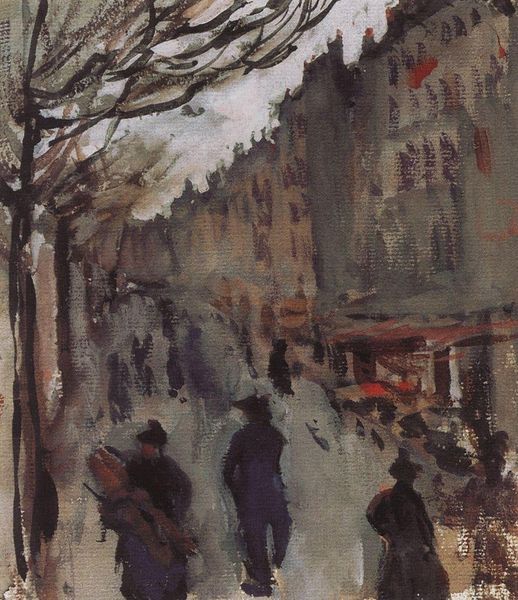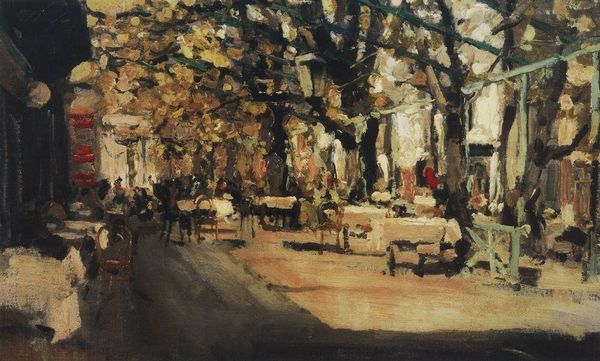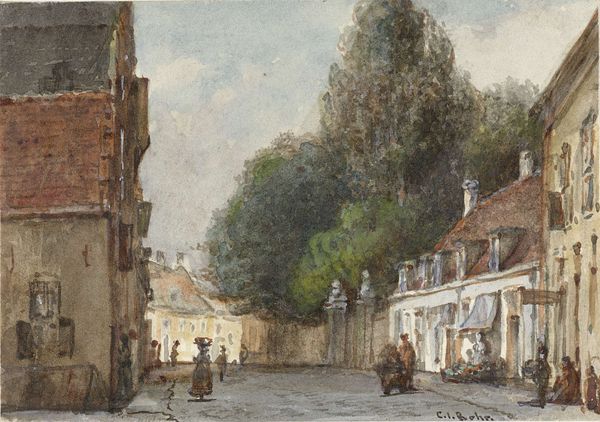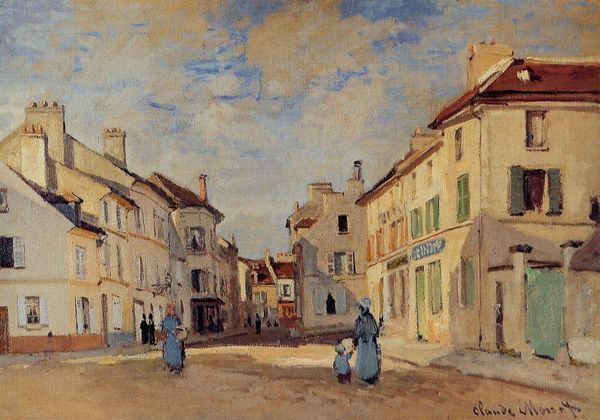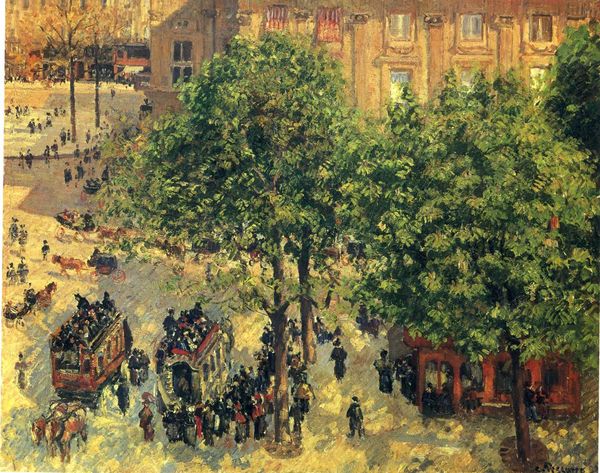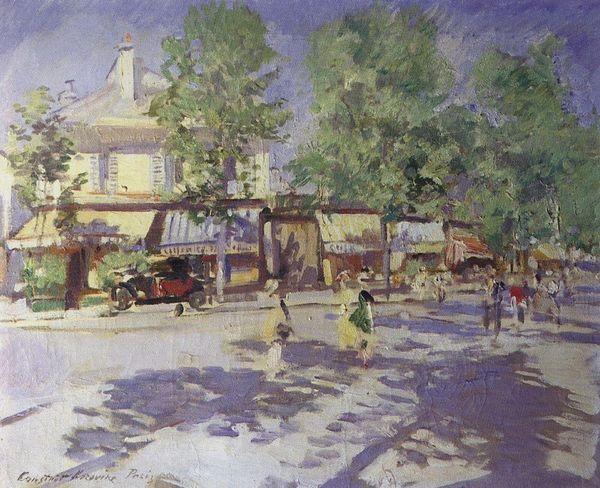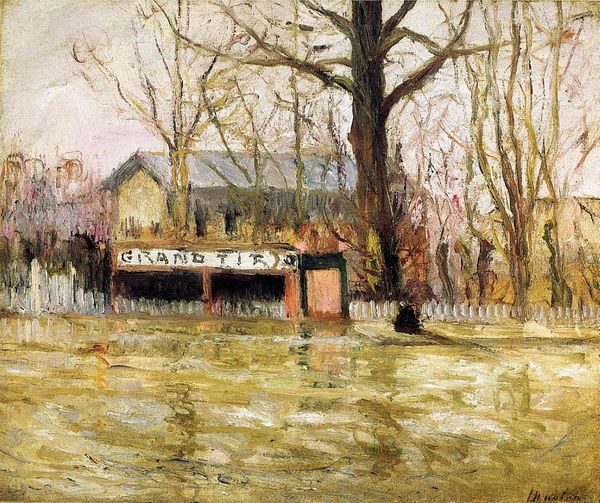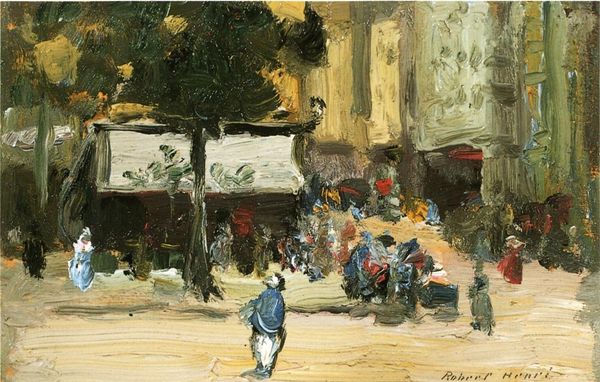
Copyright: Public domain
Curator: Here we have Konstantin Korovin’s “A Street in Vichy,” painted in 1911. Editor: It’s wonderfully atmospheric, isn't it? I immediately get a sense of a warm, bustling evening. The loose brushstrokes really capture the vibrancy of the scene. Curator: Indeed. Korovin's Impressionistic technique is on full display. Note the juxtaposition of light and shadow, achieved through rapid, broken brushwork. See how he renders the architecture not with precise lines but with dabs of color. Editor: It reminds me of how Vichy became a central location during the German occupation of France in World War II. Seeing it here in 1911, I can’t help but consider how its image would radically shift within a few decades, transformed by political and social turmoil. What do you make of that implication? Curator: I'm drawn more to the formal elements, and how Korovin uses them to flatten the perspective and prioritize surface textures. It’s about the act of seeing and rendering what's perceived onto canvas, not necessarily about documenting any specific political moment. Editor: Perhaps. But Impressionism itself, with its focus on fleeting moments and subjective experience, feels inherently tied to specific socio-political contexts. Think of the burgeoning bourgeoisie, leisure time, and the rapid modernization of cities during that period. The painting documents this in terms of brushwork but also of everyday life for some people in 1911 France. Curator: Certainly, those influences are there, but the primary concern, I would argue, remains formal. Korovin skillfully explores color relationships and the play of light, building upon what Monet and other impressionists explored earlier in the 19th century. Editor: Right. But consider the figures occupying the cafe, too: who has access to such leisure, and whose stories remain untold? Korovin's composition, however seemingly carefree, captures a world on the brink of massive transformation. It’s almost haunting when viewed with our contemporary historical awareness. Curator: Well, perhaps, but one cannot ignore the formal brilliance through which Korovin achieves these complex readings. He created an incredible composition full of complementary tension, and that’s an essential component for us to think about today. Editor: Agreed. Korovin delivers a compelling aesthetic. Ultimately, the painting becomes a touchstone for examining historical inflection points in our cultural timeline, and considering who benefits from art's historical interpretation and presentation.
Comments
No comments
Be the first to comment and join the conversation on the ultimate creative platform.
